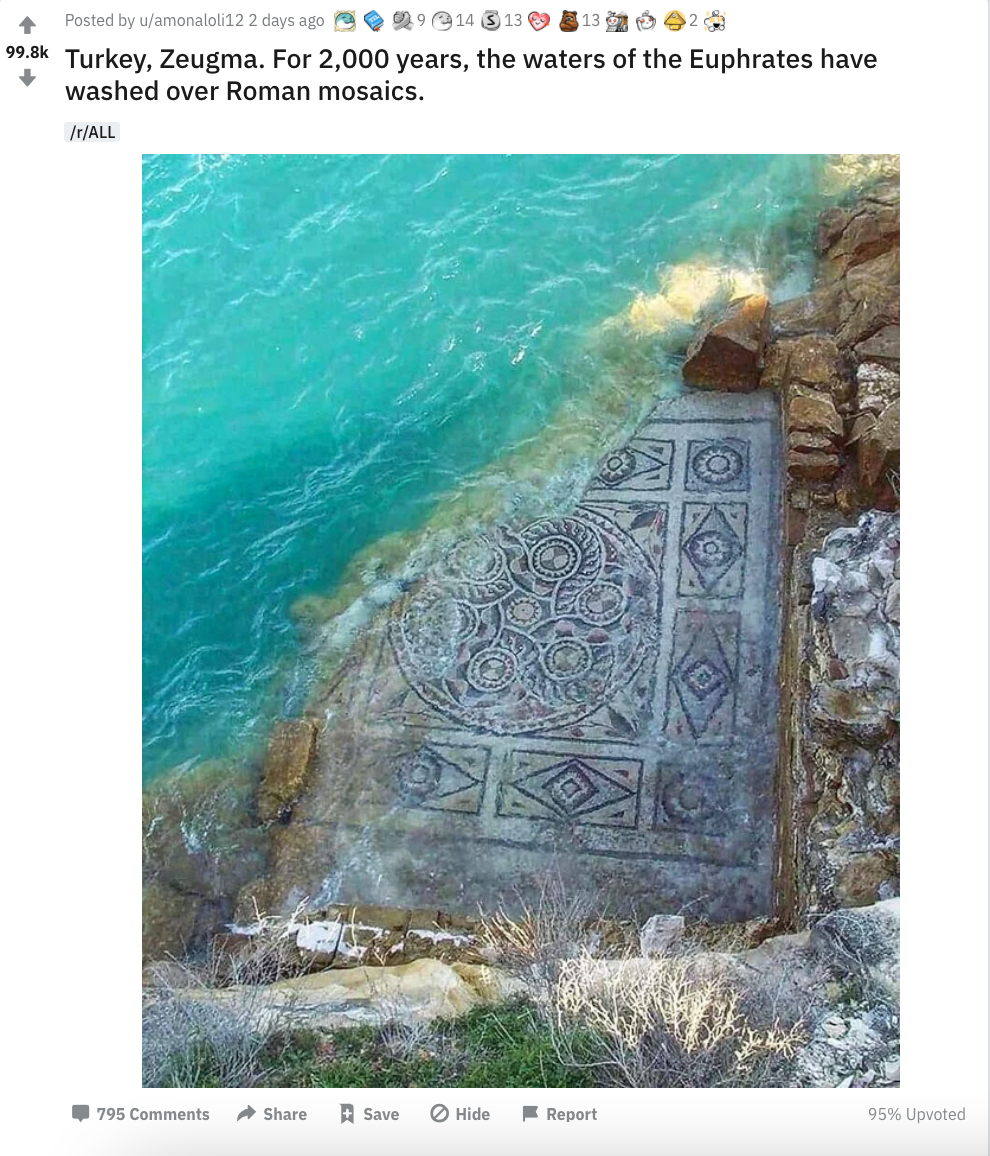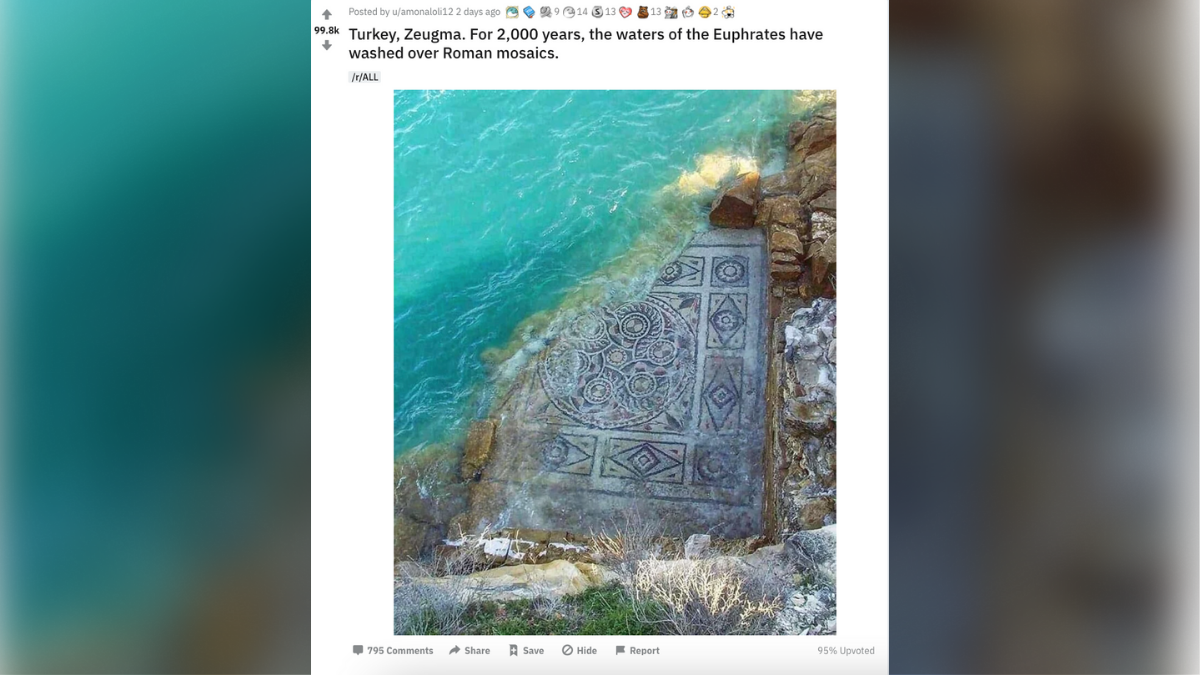Social media posts that circulated online in mid-May 2021 claimed to show 2,000-year-old Roman mosaics partially submerged in the Euphrates River near Zeugma, Turkey, prompting social media users to speculate whether the vibrantly hued ancient tiles were authentic.
A reverse-image search of photographs of the mosaics showed that the while the pictures had gone viral on Reddit in May 2021, with nearly 100,000 upvotes as of this writing, posts had been shared to Tumblr as early as July 2020.

The ancient Greek city of Zeugma dates back to the third century and is located in the southeastern region of Turkey. Its name translates literally to “bridge” or “crossing” in ancient Greek, a name that was given to describe the city’s location at a major ancient crossing point on the Euphrates River, according to the World Heritage Convention (WHC). As of this writing, the city is on the tentative list of world heritage sites due to its rich archaeological history and historical significance — and its unique mosaics.
“Zeugma mosaics are a unique collection of pictorial art reflecting private taste in a cosmopolitan city in the Hellenistic and Roman East. The figural mosaics include unique pictorial renderings of ancient literature and mythology,” wrote the WHC.
Mosaics in the Roman houses date to the second and third centuries and depict scenes of Greek and Greco-Roman mythologies that reflect “private taste in a cosmopolitan city.” The first scientific excavations of Zeugma began in 1987 and continue to this day. The mosaic in question was uncovered at the turn of the 21st century, between 2000 and 2003, according to a video shared to YouTube by the Ministry of Culture of Turkey. It can be viewed just after the 5:30 mark in the video below:
In May 2000, the nearby Birecik Dam flooded the ruins where the photographed mosaics were located, prompting an emergency excavation of the ruins complete with 60 archaeologists, 200 workers, and $5 million, noted Turkish Archaeology News.
“Of particular concern was the removal of Zeugma’s mosaics, some of the most extraordinary examples to survive from the ancient world. Soon the world’s top restorers arrived from Italy to rescue them from the floodwaters,” wrote the Archaeological Institute of America. The photograph in question was originally shared on Instagram in July 2019 by archaeologist Ali Korkmaz, who wrote in a caption that it was taken after waves revealed the mosaic during the Zeugma rescue excavations in 2000.
Though the video did not offer a specific explanation of the Zeugma mosaic, it was shown during a restoration program targeted at conserving a more than 9,100-square-foot area of another mosaic. The project excavated the mosaics for restoration at the Zeugma Mosaic Museum, where they are presumably stored today.

